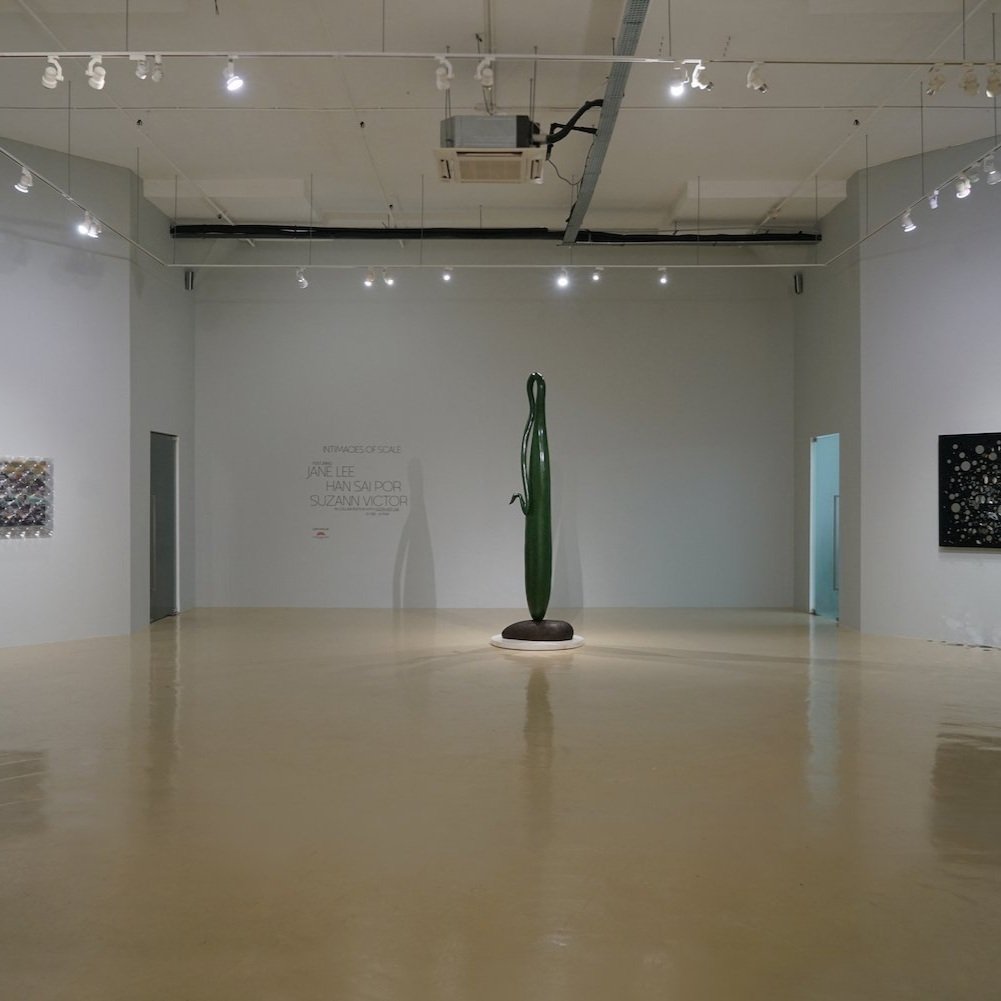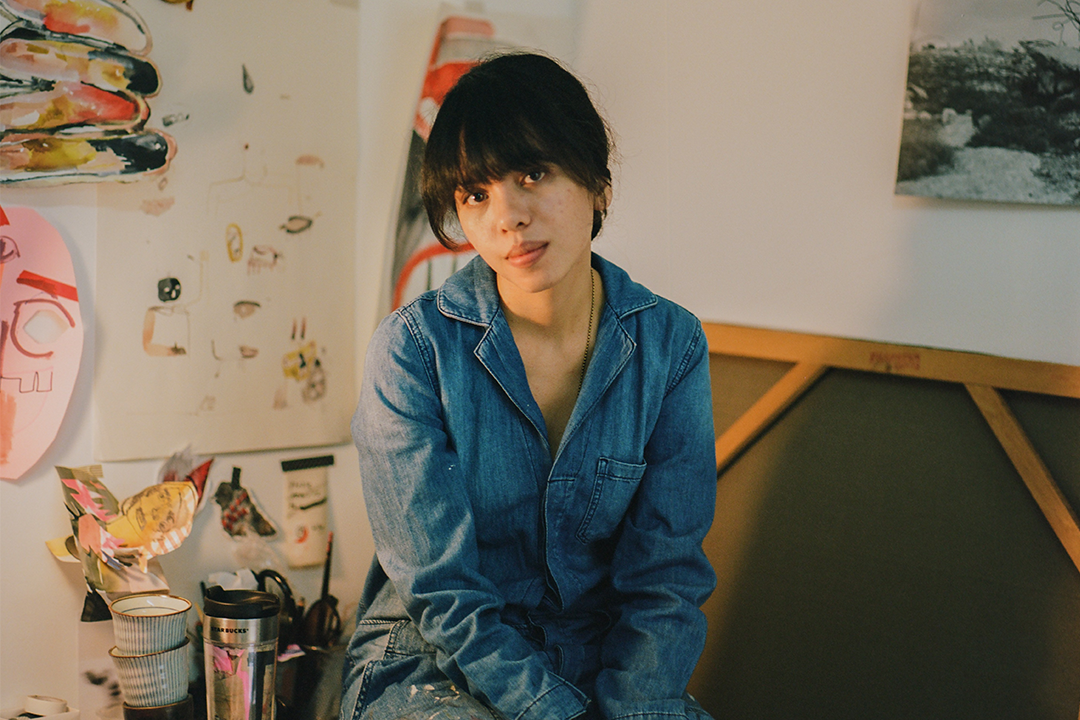Conversation with Singaporean Artist Siew Kee Liong
On holding time, the materiality of photography and 5th Passage
By Ian Tee
Siew Kee Liong, ‘OBJECTS (II)’, 2022, exhibition view at Gajah Gallery, Singapore. Image courtesy of the artist and Gajah Gallery.
We speak to Kee Liong on the occasion of his solo exhibition ‘Objects (II)’ at Gajah Gallery Singapore. In this conversation, the artist discusses the relationship between photography and time, the materiality of printed images, as well as his connection with 5th Passage, a pivotal artist-run initiative active during the early 1990s in Singapore.
Installation view of ‘Objects and Remembrances’ (1993), exhibited at and organised by 5th Passage Artists Ltd, Parkway Parade, Singapore. Image courtesy of Suzann Victor.
Siew Kee Liong, ‘OBJECTS (II)’, 2022, exhibition view at Gajah Gallery, Singapore. Image courtesy of the artist and Gajah Gallery.
Ouch! It was almost thirty years ago. I cannot remember the details but I can say some people liked it and some did not. To me, as an artist, it felt great to present my works.
How did you get connected with the 5th Passage artistic community? Do you have any memorable anecdotes from that time?
It was through a mutual friend who graduated from LASALLE. He knew I just came back from my studies and introduced me to Daniel Wong, who was the programme manager of The Substation. Daniel then connected me with Susie Lingham and Suzann Victor who were two of the co-founders of the 5th Passage.
Siew Kee Liong, ‘OBJECTS/廢棄物件 (I) – LENS’, 1993/2022, photographic print mounted on wood, 198 x 348cm, unique edition. Image courtesy of the artist and Gajah Gallery.
Siew Kee Liong, ‘OBJECTS (II)’, 2022, exhibition view at Gajah Gallery, Singapore. Image courtesy of the artist and Gajah Gallery.
The series on view in ‘Objects (II)’ adopts a consistent format. They feature a single worn out or broken object photographed against a bamboo mat. What qualities did you look out for in selecting objects to photograph for this series?
The idea for the ‘Objects’ series started with a broken lens. It happened by accident. When I was trying to clean the lens of my large format enlarger, one of them fell off onto the floor and cracked into two pieces. At first, I was horrified but was later amazed by the light that refracted off the crack’s seam. I took several photos of it and the idea of taking photos of small objects came to me some time after.
The selection process took a bit longer than I thought. However, I eventually managed to gather a collection of objects with some imperfections in them. They were broken, worn out over time, or had a certain fragile quality.
For the ‘Objects (I) and (II)’ series, a slice of time has become a slice of memory. To keep a photograph of an object is to show respect for its existence.
“For the ‘Objects (I) and (II)’ series, a slice of time has become a slice of memory. To keep a photograph of an object is to show respect for its existence.”
In your interview with curator John Tung, you spoke about I-Ching as a source of inspiration for this series. You specifically referenced Hexagram 59 Dissolution (涣), which you related to the transience of life. There seems to be an interesting tension between the notion of letting go and how a photograph has the ability to hold or freeze time. How do you negotiate these two ideas?
I like the word you used. There is no better word than “hold” in this context. The role of bamboo mat is to hold the broken piece and present it to the viewer. It is like holding a very delicate object we treasured very much with both hands and showing it to someone. Holding also has another meaning in photography which is related to time.
Time is like a stream that is forever moving forward. No one can stop time. When you capture an image or take a photograph of an object, you are extracting a slice of time and putting it on hold on a photographic paper or in a digital file while time continues. In the stream of time, everything has an expiry date, or date of dissolution. However, the photographic image will most probably last longer than the subject itself.
For the ‘Objects (I) and (II)’ series, a slice of time has become a slice of memory. To keep a photograph of an object is to show respect for its existence.
Siew Kee Liong, ‘OBJECTS/廢棄物件 (II) – KING, 1993/2022, photographic print, 60 x 48cm (framed: 89 x 89cm), Edition of 5 and 1 Artist Proof. Image courtesy of the artist and Gajah Gallery.
Siew Kee Liong, ‘OBJECTS/廢棄物件 (II) – GLOVE’, 1993/2022, photographic print, 60 x 48cm (framed: 89 x 89cm), Edition of 5 and 1 Artist Proofs. Image courtesy of the artist and Gajah Gallery.
Exhibition view of Siew’s works in ‘You, Other; I, Another’ (2018) at The Private Museum, Singapore. Image courtesy of The Private Museum, Singapore.
I have noticed that the broken chess king and glove images, in ‘OBJECTS/廢棄物件 (II) – KING’ and ‘OBJECTS/廢棄物件 (II) – GLOVE’ respectively, also appeared in the two prints you presented at ‘You, Other; I, Another’ (The Private Museum, 2018), a group exhibition curated by Susie Lingham. Do you often look back at past photographs and recontextualise them?
Yes. I do recontextualise some of my images. To me, they are iconographic because they represent an idea. They are like words in my vocabulary. When I was working on the pieces for ‘You, Other; I, Another’, Susie and I had some interesting dialogues. I started to play with pairing images that connote different ideas, much like how you would put two words together to form a new meaning. The approach was more about story-telling than image making.
I also recontextualised the old photos I took in ‘G.A.T.E. [门]’ and ‘T.U.L.I.P. [郁金香]’.
“I started to play with pairing images that connote different ideas, much like how you would put two words together to form a new meaning. The approach was more about story-telling than image making.”
Installing ‘OBJECTS/廢棄物件 (I) – GEAR’ at Gajah Gallery, Singapore. Image courtesy of the artist and Gajah Gallery.
How did you approach the question of scale for the photo installation? For example, did you take reference to particular architectural features or the human body in deciding the proportion of the work?
Scale is a very important consideration. Of course, not all of my works are large. Some smaller works are just 6 by 7cm. However, for mural-sized prints, I used the human body as a reference point. Therefore, a large-scale work for me would normally be something that measures between 1.6 and 1.8m in length as its long side. If it’s a diptych or triptych, then the dimensions would be doubled.
Siew Kee Liong, ‘G.A.T.E. [门]’, 2021, photographic print on Chromaluxe Metal, 116 x 174cm, Edition of 3 and 2 Artist Proofs. Image courtesy of the artist and Gajah Gallery.
Siew Kee Liong, ‘T.U.L.I.P. [郁金香]’, 2021, photographic print on Chromaluxe Metal, 116 x 174cm, Edition of 3 and 2 Artist Proofs. Image courtesy of the artist and Gajah Gallery.
The materiality of the photographic image also comes to the fore with the photo installation as the print is not under glass. Here I am also thinking about ‘G.A.T.E. [门]’ (2021) and ‘T.U.L.I.P. [郁金香]’ (2021) which you presented in the group exhibition ‘5th Passage: In Search of Lost Time’ (2021, Gajah Gallery). Instead of a paper substrate, these two large-scale photographic works were printed on Chromaluxe Metal. What are your considerations in choosing the surfaces of your photographs?
I am not sure when I started to have this thought. For me, black-and-white images seem to look better when printed on parchment paper. The paper substrate gives that surface texture that makes a black-and-white photograph more black-and-white. I guess I acquired this romantic preference during the days when I was making B&W prints in the dark room, with chemicals such as developer, stop bath, fixer etc.
The decision to use Chromaluxe Metal for the printing of ‘G.A.T.E. [门]’ and ‘T.U.L.I.P. [郁金香]’ is simply a technical one. Test prints showed that it revealed the exact colour and details that I was looking for. I have no printing preference when it comes to colour images.
As a follow-up question, could you talk about how you have manipulated the images? How were the different effects produced?
The manipulation of film base was something I learned when I was studying motion pictures in Miami. I like the works created by some of the experimental filmmakers such as Stan Brakhage who influenced me greatly. I like the way he manipulated the film by scratching off or drawing on the film base.
I used some of these techniques in ‘G.A.T.E. [门]’ and ‘T.U.L.I.P. [郁金香]’. I also applied chemicals to the film base. To prevent the chemical running off the film base, a sheet of acetate film was used to “sandwich” the chemical so that it can react with the film base more evenly.
At times, there are Chinese titles for your works. In the case of ‘OBJECTS/廢棄物件’, the Chinese title provides more information about the discarded status of the objects depicted. Does language influence the way you think about your work?
Yes, language does affect my thought process. I find it most intuitive to express myself through Chinese. When I tap into my inner self for inspiration, Chinese characters always come to me first. Naturally, the ideas and thought process will be in this language too. I guess that is the habit of most 华校生 (students who studied in Chinese medium schools).
Are there any upcoming projects our readers can look forward to?
Yes. I am currently working on another project of black-and-white photography of people.
This article is presented in partnership with Gajah Gallery.
‘Objects (II): Siew Kee Liong’ is on view from 6 to 29 May 2022 at Gajah Gallery, Singapore. The artist will be holding guided tours on 28 and 29 May 2022, from 3 to 4pm.
Watch this video interview between Siew Kee Liong and curator John Tung:
This interview was republished on Art World Database (AWDB) on 22 February 2023 here. To view the profile of Siew Kee Liong on AWDB, click here.










![Siew Kee Liong, ‘G.A.T.E. [门]’, 2021, photographic print on Chromaluxe Metal, 116 x 174cm, Edition of 3 and 2 Artist Proofs. Image courtesy of the artist and Gajah Gallery.](https://images.squarespace-cdn.com/content/v1/6213069cc62e8c6048531bae/ec8104d6-f9e9-4c74-bc59-3d69eb1e47e4/Siew+Kee+Liong%2C+%E2%80%98G.A.T.E.+%5B%E9%97%A8%5D%E2%80%99%2C+2021%2C+photographic+print+on+Chromaluxe+Metal%2C+116+x+174cm%2C+Edition+of+3+and+2+Artist+Proofs.+Image+courtesy+of+the+artist+and+Gajah+Gallery.)
![Siew Kee Liong, ‘T.U.L.I.P. [郁金香]’, 2021, photographic print on Chromaluxe Metal, 116 x 174cm, Edition of 3 and 2 Artist Proofs. Image courtesy of the artist and Gajah Gallery.](https://images.squarespace-cdn.com/content/v1/6213069cc62e8c6048531bae/3cb39eee-14eb-4f91-9d9d-e88755823f4c/Siew+Kee+Liong%2C+%E2%80%98T.U.L.I.P.+%5B%E9%83%81%E9%87%91%E9%A6%99%5D%E2%80%99%2C+2021%2C+photographic+print+on+Chromaluxe+Metal%2C+116+x+174cm%2C+Edition+of+3+and+2+Artist+Proofs.+Image+courtesy+of+the+artist+and+Gajah+Gallery.)



